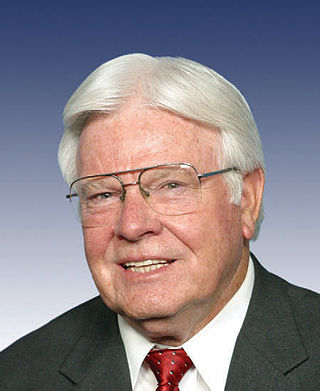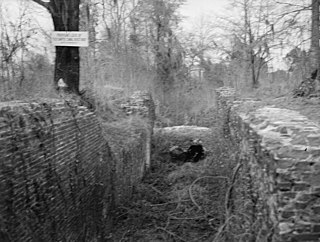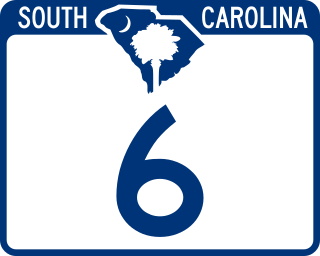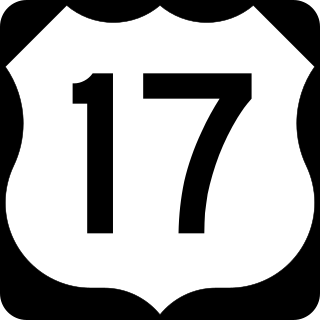Related Research Articles

Berkeley County is a county in the U.S. state of South Carolina. As of the 2020 census, its population was 229,861. Its county seat is Moncks Corner, and the largest city is Goose Creek. After two previous incarnations of Berkeley County, the current county was created in 1882. Berkeley County is included in the Charleston-North Charleston, SC Metropolitan Statistical Area.

Moncks Corner is a town in and the county seat of Berkeley County, South Carolina, United States. The population was 7,885 at the 2010 census. As defined by the U.S. Census Bureau, Moncks Corner is included within the Charleston-North Charleston-Summerville Metropolitan Statistical Area.

North Charleston is a city in Berkeley, Charleston, and Dorchester counties within the U.S. state of South Carolina. As of the 2020 census, North Charleston had a population of 114,852, making it the 3rd most populous city in the state, and the 248th most populous city in the United States. North Charleston is a principal city within the Charleston–North Charleston, SC Metropolitan Statistical Area, which had a population of 799,636 in 2020.

Henry Edward Brown Jr. is an American politician who was the U.S. representative for South Carolina's 1st congressional district from 2001 to 2011. He is a member of the Republican Party. He did not stand for re-election in 2010.

The Santee Canal was one of the earliest canals built in the United States. It was built to provide a direct water route between Charleston and Columbia, the new South Carolina state capital. It was named to the National Register of Historic Places in 1982.
The Petersburg Railroad ran from Petersburg, Virginia, south to Garysburg, North Carolina, from which it ran to Weldon via trackage rights over the Seaboard and Roanoke Railroad.
Rosa Lee Franklin is an American politician and nurse who served as a member of the Washington State Senate from 1993 to 2011, representing the for the 29th District. She also served as the President Pro Tempore for the Senate.

South Carolina Highway 6 (SC 6) is a 116.092-mile (186.832 km) primary state highway in the U.S. state of South Carolina. It extends from US 76 in Ballentine to US 52/SC 6 Truck in Moncks Corner. It uniquely links all three of the major hydropower projects in South Carolina: Lake Murray, Lake Marion, and Lake Moultrie.

U.S. Highway 17 Alternate is a 123.9-mile (199.4 km) alternate route of US 17 in South Carolina that travels between Pocotaligo and Georgetown. It has been four-laned in various segments since 1970.

Lieutenant General Henry Doctor Jr. was the Commanding General, 2nd Infantry Division, Eighth United States Army, based in South Korea. His last assignment was as The Inspector General of the U.S. Army.

U.S. Route 52 (US 52) is a 159.960-mile (257.431 km) north–south U.S. Highway that travels from Charleston to the North Carolina state line near Cheraw. It serves as a strategic highway through the central part of the state. Though an even-numbered U.S. Highway, which are typically signed east–west, it is signed north–south in South Carolina. In some other states along its route, it is signed east–west. The South Carolina segment is signed such that US 52 north corresponds to the general westward direction of the highway, and vice versa.
The Battle of Lenud's Ferry was a battle of the American Revolutionary War that was fought on May 6, 1780 in present-day Berkeley County, South Carolina. All of the British soldiers who took part in the Battle of Lenud's Ferry were in fact Loyalists who had been born and raised in the colony of South Carolina, with the sole exception being their commanding officer Banastre Tarleton. The unit was known as the Loyalist British Legion, under the command of Lieutenant Colonel Banastre Tarleton. The Loyalist British Legion scattered a company of Patriot militia at Lenud's Ferry, a crossing point on the Santee River, north of which lies present-day Georgetown County.

Mulberry Plantation is a historic plantation property in rural Berkeley County, South Carolina. Located between Moncks Corner and Charleston, this property was developed in 1714 by Thomas Broughton, who became the Royal governor of South Carolina, and is one of the oldest plantation homes in the United States. Its rice fields, dikes and canals were well-preserved into the 20th century. The plantation house and ten surrounding acres were declared a National Historic Landmark in 1963.

The Biggin Church Ruins are the ruins of a church in Berkeley County, South Carolina. Biggin Church is its name in the USGS Geographic Names Information System. The ruins are about 2 mi (3 km) from Moncks Corner, South Carolina, near the intersection of South Carolina Highway 402 and State Highway 8-376. The church has been burned three times since it was first constructed in about 1711. It was the church of the parish of St. John's, Berkeley The ruins are from the church built in 1761 and its reconstruction in 1781. It was included in the National Register of Historic Places on December 13, 1977. UPDATE 11/2019: Biggin Church Ruins remain part of Strawberry Chapel’s land.

Captain Isaac Edward Emerson (1859–1931) was a wealthy American businessman, socialite, and seaman. He is most notable for having created the headache remedy Bromo-Seltzer upon which his great wealth was based and the reason he was known as the "Bromo-Seltzer King".
Odd Fellows Hall (1872–1932) in Boston, Massachusetts, was built for the Independent Order of Odd Fellows, Grand Lodge of Massachusetts. It occupied a large lot in the South End, at no.515 Tremont Street at Berkeley Street. Architect Joseph Billings designed the structure which had several large meeting rooms: Covenant Hall, Encampment Hall, Friendship Hall, Oasis Hall. Tenants included Emerson College of Oratory. Among the events that took place in the hall: 1892 annual dinner of the Tremont House Waiters’ Association. In January 1932 fire destroyed the building.

South Carolina Highway 402 (SC 402) is a 15.680-mile (25.235 km) primary state highway in the U.S. state of South Carolina. It serves to connect the community of Cordesville with the surrounding highways.

Lewisfield Plantation is a historic plantation house located near Moncks Corner, Berkeley County, South Carolina. It was built about 1774, and is a 2 1/2-half story clapboard dwelling. It is supported by a high brick foundation that encloses a raised basement. It has a five bay wide verandah supported by six slender Doric order columns. Records show over 100 slaves were held in bondage on the plantation as of 1835.
Robert Linwood Helmly is an American former politician. He served in the South Carolina House of Representatives and South Carolina Senate for Berkeley County, South Carolina as a Democrat. He was born in Savannah, Georgia and was the president of a telephone company. He resides in Moncks Corner, South Carolina.

Thomas Broughton was a colonial-era official in South Carolina, serving a variety of positions, including acting Governor from May 5, 1735, through November 22, 1737.